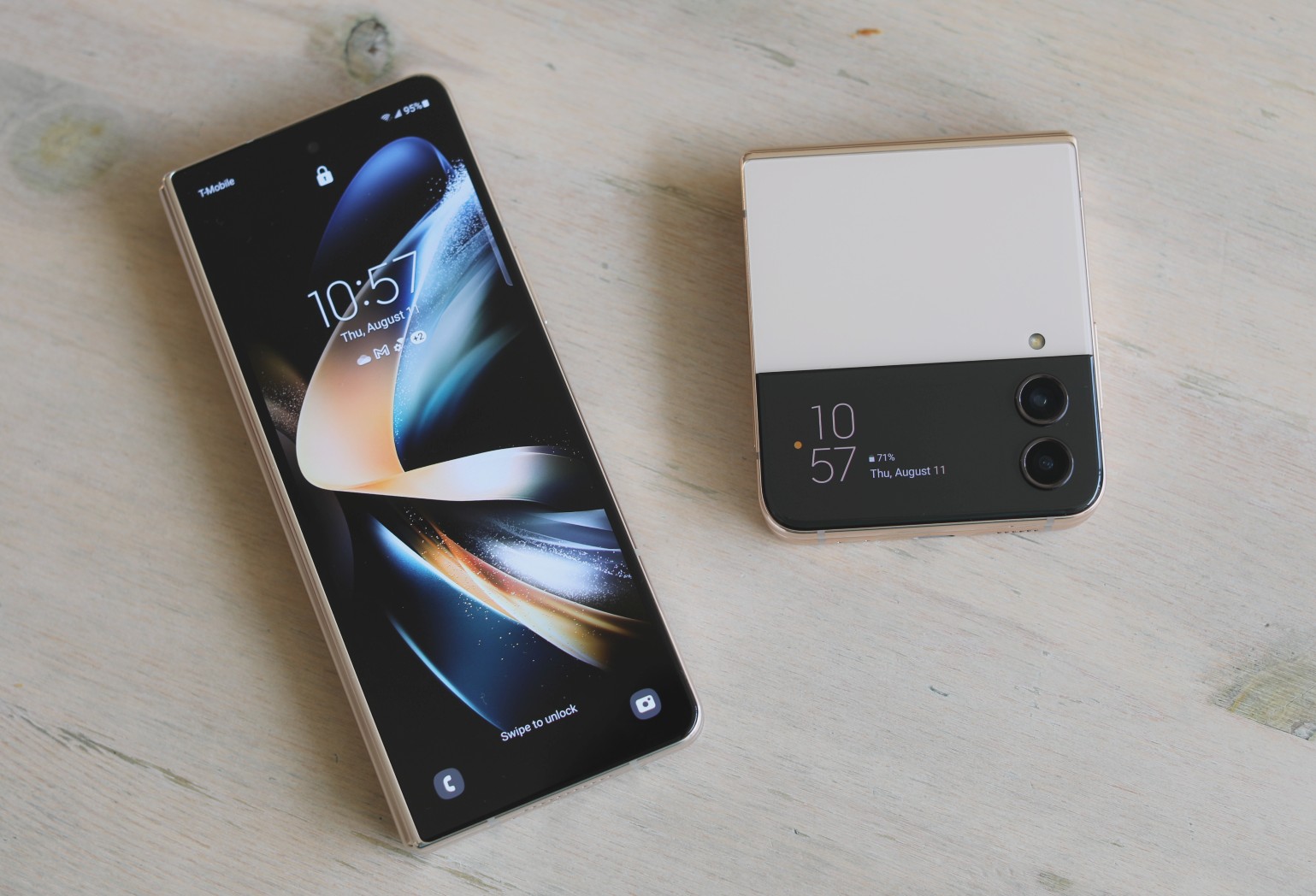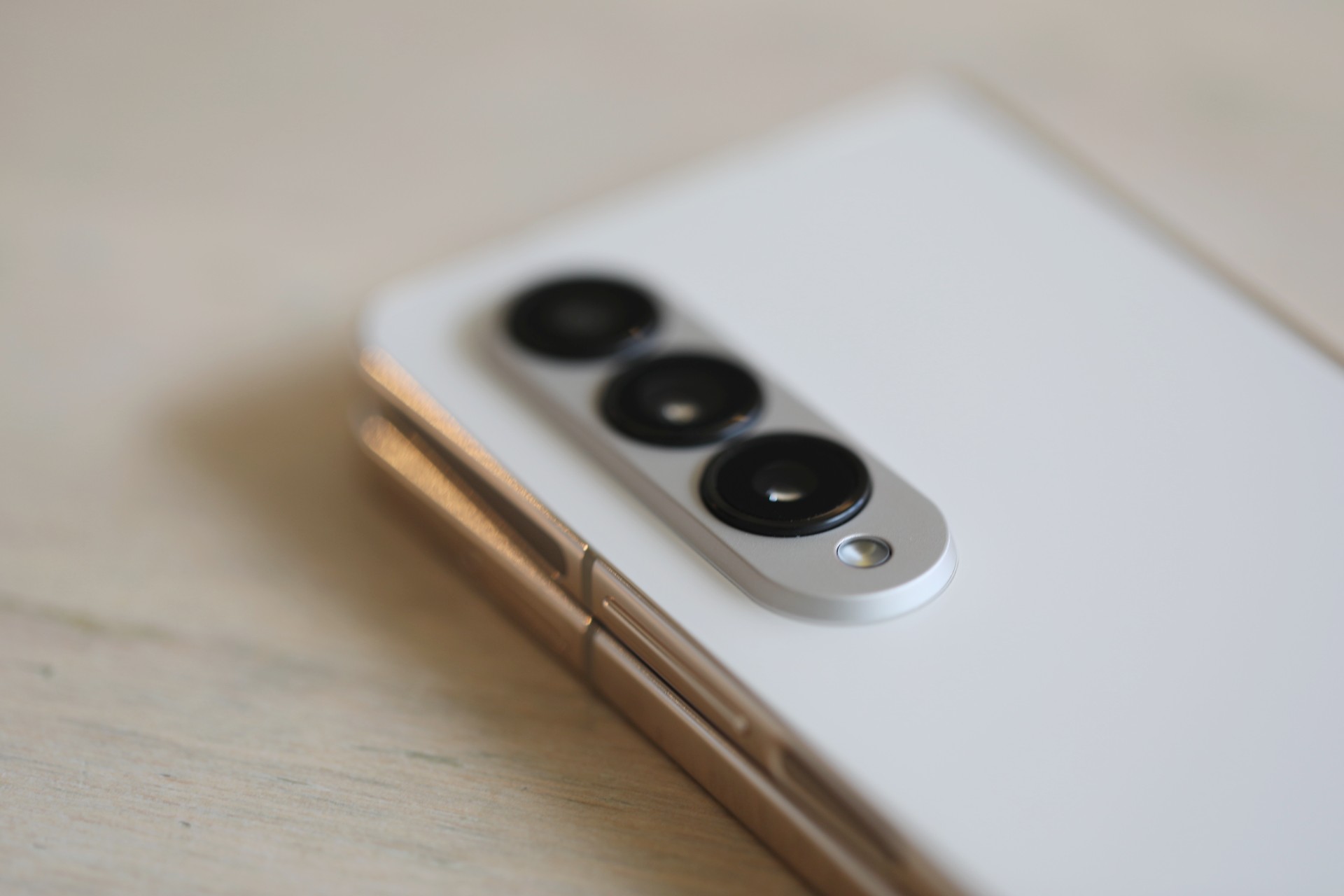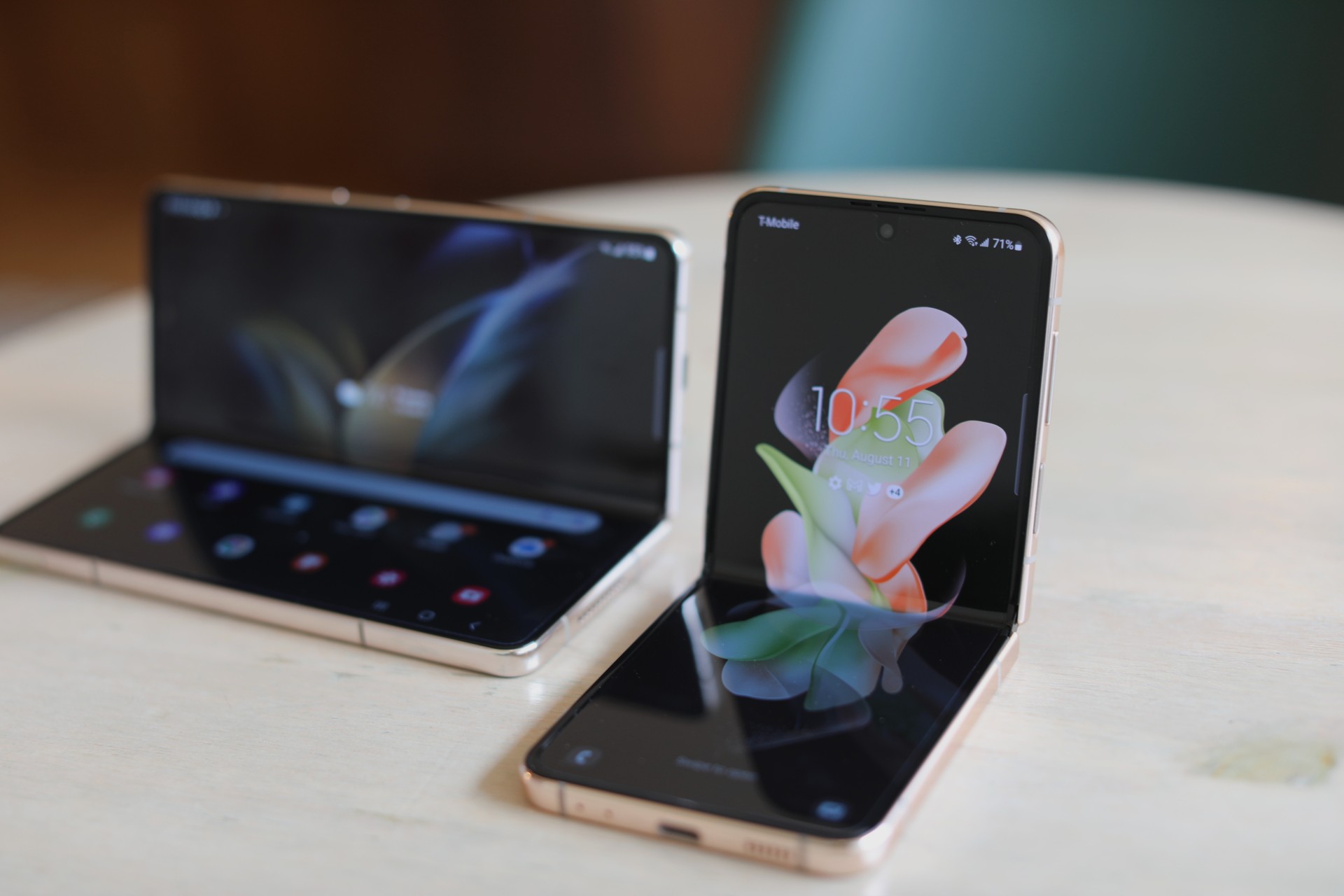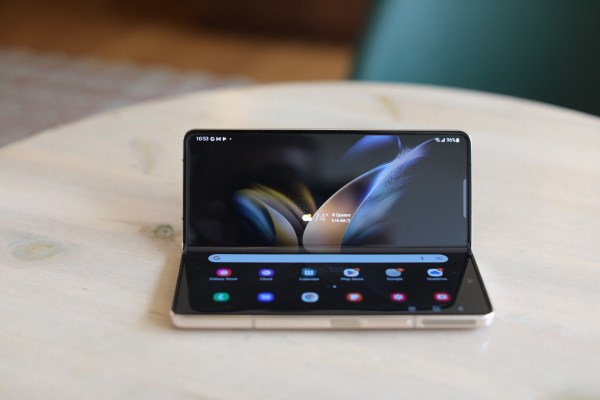One doubts Samsung’s convictions at their own peril. The company will be the first to point to the O.G. Note phablet as the ultimate expression of this phenomenon. The line may be gone, having been absorbed into the flagship Galaxy S product, but its influence on the industry is still being felt a decade after its release left pundits wondering whether the company had utterly lost it.
A convincing argument could be made that the Note, too, gave birth to Samsung’s foldable ambitions, as well. While it’s true the company has done an increasingly good job shrinking the screen-to-body ratio, there’s a very practical limitation in smartphone screen size. At a certain point, one simply runs out of pocket, and 6.8 inches might just be that figure.
When the first Galaxy Fold arrived in late 2019, it delivered the promise of a 7.3-inch, pocketable screen. For whatever issues that first device may have had (and it had plenty), it had cracked the code. For that reason alone, it felt like a taste of the future. At the very least, it’s long been clear that foldable displays point the way forward in a stagnant market. The biggest question, however, is how long it will take to get there.
For its part, Samsung was ready to start calling the Fold its new flagship almost immediately. The company jumped the gun, plain and simple. Adopting a new form factor isn’t the sort of thing that happens overnight — certainly not when it runs nearly double the price of an existing flagship phone. In the company’s defense, adoption has been brisker than many anticipated. Samsung recently noted that it shipped around 10 million foldables in 2022. Obviously, we’re not talking Galaxy S or iPhone numbers here, but the momentum is undeniable.

Image Credits: Brian Heater
There are still a lot of question marks, of course. First is how much sales have been driven by novelty versus practicality. That will be answered over time, if figures plateau or drop. Short term, however, healthy growth seems possible, as more consumers are made aware of the form factor and manufacturers continue to refine their offerings. A potential folding Apple device is, naturally, the huge wild card in this discussion. If the company feels confident enough in the tech to bring a product to market, there’s bound to be a seismic shift.
The Galaxy Fold wasn’t the first foldable announced, exactly, (though no one was about to mistake the FlexPai for a mainstream consumer product), but it had enough of an early lead to provide the template for the form factor. It’s a big (if narrow) device that gets bigger and thinner when unfolded. As I noted in the recent Galaxy Flip review, however, big-phone fatigue is like a real phenomenon — not enough to catapult the Small Android Phone to 50,000 responses, but real, nonetheless.
I think we’d all love to devote less pocket space to a giant device, without sacrificing screen real estate. Once you’ve lived with a larger screen, it’s difficult surrendering it back. This, I think, is a big part of the reason consumers have thus far overwhelmingly gravitated toward the Flip form factor. It’s a more compact way of fitting a big screen in your pocket when most people don’t have much expectation — or need — for carrying a 7.6-inch screen around in their pockets.

Image Credits: Brian Heater
Ultimately, however, the Flip has won the battle, but not the war. Currently the Fold is hampered by the big, bulky phone surrounding its screen. As it stands, it’s simply too much phone for too much money for a majority of users. It’s a device more devoted to the “can” than the “why” of foldables. As Samsung continually gets better at stuffing a large foldable phone screen into a (relatively) compact footprint, it’s not difficult to imagine this narrative shifting.
As with previous generations, I’ve enjoyed my time with the Fold, but can’t imagine a scenario in which I’d buy one for myself. With the Flip, on the other hand, there were plenty of moments where it made sense. I’m not rushing out to swap my existing phone for the product, but that’s not nearly as far-fetched a scenario as I might have considered it a few years ago.
These bigger issues will remain with the device until Samsung makes some radical upgrades to the hardware — perhaps when or if it starts to see some serious competition in the category. But the Z Fold 4 looks a heck of a lot like its predecessor, the company having addressed the small front-facing display issue a while back. But the product finds Samsung continuing to advance the device in some meaningful ways.

Image Credits: Brian Heater
This is the first device to get Android 12L — a forked version of the operating system designed specifically for the emerging large screen category that includes products like the Fold. Mulitasking, understandably, is the focus here, and the marquee feature is a new app tool bar that sits along the bottom of the display.

Image Credits: Brian Heater
It’s similar to what you’d traditionally find on a desktop or tablet, albeit with extremely scaled-down icons. It’s a nice addition and the 7.6-inch screen is JUST big enough for it to make sense. It’s a clever implementation that lets you hold down on an icon and drag and drop into a split screen view. All in all, Samsung’s lightyears ahead of the competition when it comes to multitasking on the (relatively) small screen. Whatever form future foldables take, the foundation the company has built here will almost certainly prove valuable.
I’ve also found, much to my surprise, that I’ve begun to appreciate the narrow 6.2-inch front-facing screen. It’s reminiscent of the bizarre GEM device Essential showed off shortly before its demise. It’s less than ideal for most things than a standard display aspect ratio, but it fits comfortably in the hand, and I do think there’s a lot of room to innovate here. I would love to see more developers create experiences specifically for that front screen as these devices continue to grow in popularity.

Image Credits: Brian Heater
Performance is bolstered by the latest Qualcomm flagship, Snapdragon 8 Plus Gen 1 — the same as the Flip. Samsung continues to excel with the rear-facing camera system — that’s a place the Fold has the Flip handily beat. It’s still a triple-camera array, though the main 12-megapixel sensor has been swapped for a 50-megapixel one. The real differentiator between the two foldables, however, is the move from a 2x to 3x telephoto. That’s optical zoom — and it makes a big difference, in terms of not degrading the image as you push in tighter.
For a second year in a row, Samsung went under-display for the interior camera. The company’s gotten a bit better at masking the spot, which looks like an area with enlarged pixels. That is to say it’s definitely noticeable when looking at it. The existing technology means the image quality on the 4-megapixel camera is still degraded, and it struggles in low light. Though, as has been noted, given that you can also take selfies with the 10-megapixel front-facing camera, the interior almost exclusively exists for teleconferencing purposes.

Image Credits: Brian Heater
The battery, meanwhile, is 4,400mAh — as before. That should get you through a day, no problem. Though given the demands of the big screen, if you watch videos and the like, anything more than that is probably pushing it. Also, like its predecessor, the system is IPX8 waterproof — so you shouldn’t have a problem getting it wet. Dust is, again, a non-starter, due largerly to the hinge mechanism.
A few generations in, Samsung has settled into a more iterative approach to updates for the Fold. Nothing here screams “update” after last year’s model (certainly not at $1,800). The system is a triumph for smallish screen multi-tasking, but for a majority of users looking to getting aboard the folding train, there’s little reason to recommend the Fold over the Flip.


























































